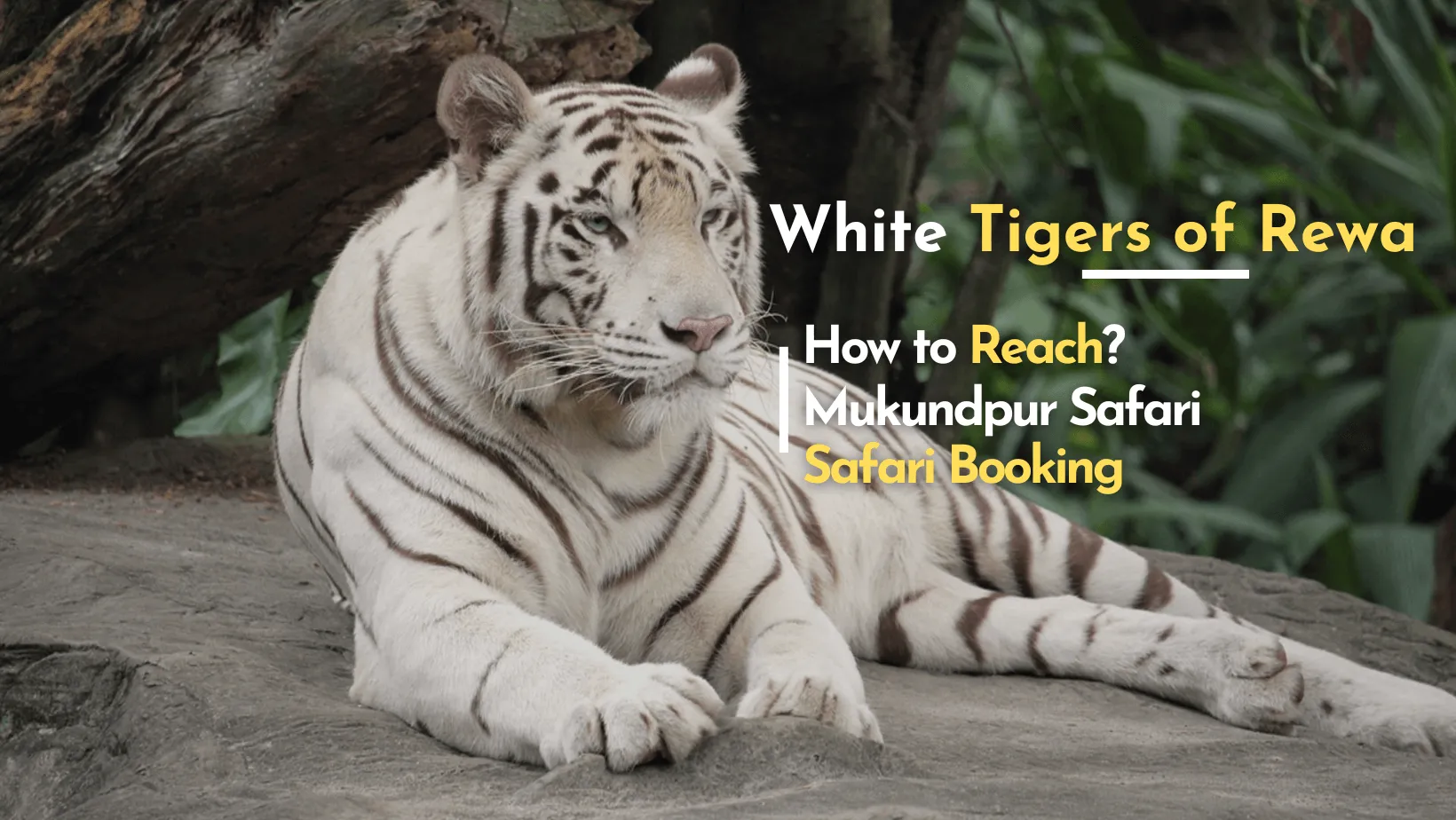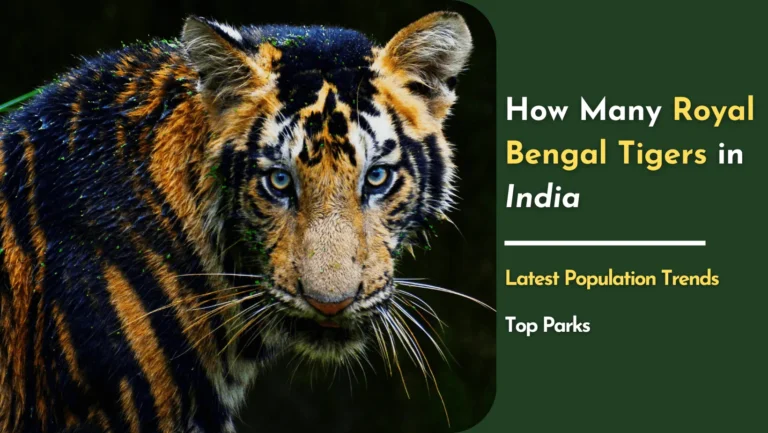Budget Stay Starting @ ₹500 to ₹1000 in Jabalpur
Why Is the White Tiger of Rewa So Popular?


You will be mesmerized by the sight of a white tiger, a rare beauty of nature that captivates wildlife enthusiasts. If you are passionate about nature and wildlife, witnessing this extraordinary creature in its habitat is an unforgettable experience. Maharaja Martand Singh Judeo White Tiger Safari and Zoo, located in Mukundpur, Satna district, is the home to this magnificent animal. The zoo features a White Tiger Safari, providing visitors with a chance to see these rare tigers up close. Additionally, the zoo houses over 40 endangered species and more than 60 non-endangered species, offering a rich and diverse wildlife experience.1
The story of the white tiger in India dates back to 1951 when Maharaja Martand Singh first spotted the white tiger, named Mohan, in the Sidhi forest area. Mohan became the progenitor of the white tiger lineage in captivity, marking a significant moment in wildlife conservation. Visiting Maharaja Martand Singh Judeo White Tiger Safari and Zoo not only allows you to marvel at the white tiger but also to learn about and support the conservation of various endangered species. This national park stands as a testament to the efforts made to protect and celebrate India’s unique wildlife heritage.
The Legend of Mohan: The First White Tiger of Rewa
Mohan, the founding father of the white tigers of Rewa, belongs to the species of Royal Bengal Tiger. He had a rare genetic defect that stripped away his natural yellow color, giving him his unique white appearance. The story of Mohan began in captivity after he was captured by the Maharaja of Rewa. As a cub, Mohan lost his mother and siblings to the onslaught of hunters and poachers, and he was kept at the court of Govindgarh.
Determined to preserve this rare genetic trait, the Maharaja initially bred Mohan with a tigress named Begum, who had a normal coloration. Despite three attempts, the pair failed to produce white cubs. To solve this problem, Mohan was then bred with his own daughter, Radha, who had inherited the white tiger gene from her father. Fortunately, Radha gave birth to four white cubs, named Raja, Rani, Mohini, and Sukeshi.2
Mohan’s legacy as the progenitor of a generation of white tigers was thus established. His lineage continues to be celebrated, highlighting the success of captive breeding programs and the importance of genetic diversity in conservation efforts.
Unique Characteristics of White Tigers
Scientists have analyzed the genomes of 16 related orange and white tigers in captivity and identified a mutation in one pigment gene called SLC45A2 as the cause of the white coloration. This same gene is responsible for lighter coloring in other animals. To further validate their findings, the team of scientists examined 130 unrelated white and orange tigers. Their research confirmed that the white coat results from the loss of yellow pigments, while the black stripes remain unaffected.
However, researchers are still uncertain about the exact mechanism behind this mutation. Some speculate that it may be due to a genetic defect intensified by inbreeding, but more research is needed to fully understand the phenomenon. This discovery not only provides insight into the genetic basis of the white tiger’s unique appearance but also underscores the importance of genetic diversity in conservation efforts to prevent potential health issues associated with inbreeding.3
Conservation Efforts and the Role of Mukundpur White Tiger Safari
The conservation of the white tiger has been initiated with the establishment of a 25-hectare sanctuary in Mukundpur, located 20 km from Rewa. This sanctuary, the world’s first dedicated to white tigers, is home to a single white tiger. The adjoining zoo also supports various conservation efforts, housing the progeny of white tigers that roam freely within the sanctuary.
However, critics argue that the establishment of the sanctuary is irrelevant and driven by political motives in the state of Madhya Pradesh. They believe that the primary goal is to create a profitable tourist destination to boost the economy of Rewa rather than genuine conservation efforts. Wildlife experts are particularly critical of white tiger breeding programs, viewing them as a waste of resources with no real conservation value. The distinct white coat of these tigers makes them unsuitable for survival in the wild due to their lack of camouflage.
Furthermore, releasing captive-bred tigers into the wild poses significant risks, potentially advancing weak genes within the population. Despite these concerns, the white tiger sanctuary has become a significant tourist attraction, drawing visitors intrigued by the rarity and beauty of these majestic creatures. While the conservation value of such efforts is debated, the sanctuary undeniably raises awareness about the species and stimulates local tourism.4
Travel Tips: Planning Your Visit to Rewa
Mukundpur Forest is located approximately 15.5 km from the Rewa Bus Stand, making it a convenient destination for visitors. The forest opens to the public from 9 am to 4:30 pm and is closed on Wednesdays. The entry fee is Rs 10 per person, but group safaris are also available, allowing visitors to book according to the number of people in their group.
Visitors are encouraged to carry a bottle of water with them to stay hydrated during their visit. In addition to exploring the forest, you can visit the museum within the park, which offers educational insights into the local flora and fauna. There is also a café where you can enjoy snacks and refreshments, making the visit more enjoyable. Overall, Mukundpur Forest provides a wonderful and enriching tour experience, combining natural beauty with opportunities for learning and relaxation. Whether you are a nature enthusiast or just looking for a peaceful escape, this destination has something for everyone.5
Conclusion
The White Tiger of Rewa holds a special place in wildlife history. Mohan, the founding father, initiated a unique genetic lineage. Conservation efforts, including the Mukundpur sanctuary, aim to preserve these rare tigers. Despite criticisms about the sanctuary’s relevance and the challenges of breeding programs, the white tiger remains a cultural icon in Rewa. Visiting Rewa offers a chance to experience this legacy firsthand, understand the region’s conservation efforts, and appreciate the majestic beauty of the white tiger. Rewa’s rich history and dedication to these tigers make it a compelling destination for wildlife enthusiasts and tourists alike.
- https://whitetigersafari.in/ ↩︎
- https://www.indiatimes.com/news/india/this-is-the-story-of-mohan-the-majestic-ancestor-of-all-the-white-bengal-tigers-alive-today-253948.html ↩︎
- https://www.science.org/content/article/scienceshot-how-white-tiger-got-its-coat ↩︎
- https://timesofindia.indiatimes.com/india/Worlds-first-sanctuary-for-white-tigers-opens-in-MP/articleshow/51675157.cms ↩︎
- https://www.thrillophilia.com/attractions/mukundpur-zoo ↩︎



